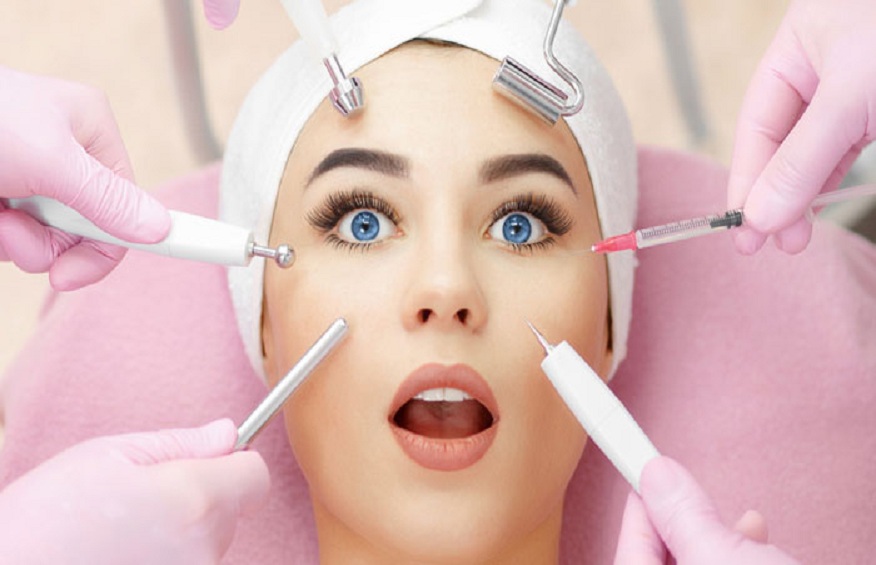Introduction
In the quest for youthful-looking skin, people are constantly seeking new and innovative treatments. One popular non-invasive procedure that has gained significant attention is Ultherapy 效果. Alongside this, another emerging technique known as the ultrasound knife has piqued curiosity.
Understanding Ultherapy
How does Ultherapy work?
During an Ultherapy session, a specially trained practitioner uses an ultrasound device to deliver targeted energy to the underlying layers of the skin. This energy triggers a natural response in the body, stimulating the production of collagen. Over time, the newly produced collagen helps to lift and tighten the skin, reducing the appearance of wrinkles and sagging.
Benefits of Ultherapy
For individuals looking for non-invasive skin tightening, ultherapy is an interesting alternative due to its many advantages. The process is first and foremost non-surgical, so there are no incisions, scars, or prolonged recovery times. Additionally, it is a rather short procedure; depending on the areas being treated, most sessions range between 30 and 90 minutes. Furthermore, Ultherapy is suitable for individuals of various skin types and tones.
Safety considerations
Ultherapy is generally considered a safe procedure when performed by a qualified and experienced practitioner. However, as with any medical treatment, there are certain safety considerations to keep in mind. It is crucial to disclose any medical conditions, medications, or previous treatments to ensure that Ultherapy is a suitable option for you. Additionally, it is essential to choose a reputable clinic or provider to minimize potential risks.
The Effectiveness of Ultherapy
Evidence-based research on Ultherapy
Numerous studies have been conducted to evaluate the effectiveness of Ultherapy in skin tightening and rejuvenation. These studies have consistently shown positive results, with improvements in skin laxity, reduction of wrinkles, and overall skin tightening. One study published in the Journal of Dermatological Treatment demonstrated significant improvements in facial skin laxity after a single Ultherapy treatment, with the effects lasting up to 12 months.
Results and outcomes
The results of Ultherapy can vary depending on individual factors such as age, skin condition, and treatment area. Some individuals may notice immediate improvements, but the full effects of the treatment become more apparent over the following months as collagen production increases. Many patients report smoother, firmer skin, diminished fine lines, and a more lifted appearance after undergoing Ultherapy.
Duration of effects
The longevity of Ultherapy’s effects varies from person to person. Factors such as the individual’s age, skin quality, and lifestyle choices can influence how long the results last. While Ultherapy does not stop the natural aging process, it can effectively slow down the signs of aging. Generally, results can be seen for up to a year or more, but maintenance treatments may be recommended to sustain the desired outcomes.
Comparing Ultherapy with Other Treatments
Ultherapy vs. surgical facelift
A surgical facelift is a more invasive option that involves incisions, tissue manipulation, and removal of excess skin. While it can provide dramatic and long-lasting results, it also carries higher risks, prolonged recovery time, and potential scarring. Ultherapy, on the other hand, is a non-surgical alternative that offers noticeable improvements with minimal downtime and fewer risks.
Ultherapy vs. laser treatments
Laser treatments, such as fractional laser resurfacing, are commonly used for skin rejuvenation. While lasers target the outer layers of the skin, Ultherapy penetrates deeper into the dermis, reaching the foundational layers responsible for collagen production. Both treatments can yield positive results, but Ultherapy focuses on lifting and tightening, while lasers primarily address skin texture and pigmentation concerns.
Ultherapy vs. injectables
Injectable treatments like dermal fillers and Botox are often used to reduce the appearance of wrinkles and restore volume. While these treatments provide immediate results, they are temporary and require regular maintenance. Ultherapy, on the other hand, stimulates the body’s natural collagen production, offering gradual and longer-lasting improvements without the need for repeated injections.
Ultherapy Treatment Process
Consultation and assessment
Before undergoing Ultherapy, a consultation with a qualified practitioner is essential. During this consultation, the practitioner will assess your skin condition, discuss your goals and expectations, and determine whether Ultherapy is the right treatment for you. They will also explain the procedure in detail and address any concerns or questions you may have.
Preparation for the procedure
Unlike surgical procedures, Ultherapy does not require extensive preparation. However, your practitioner may advise you to avoid certain medications or skincare products that can increase the risk of bruising. It is also recommended to arrive at the appointment with clean skin, free from makeup or lotions.
The procedure itself
During the Ultherapy procedure, the practitioner will apply a gel to the treatment area and use an ultrasound device to deliver targeted energy beneath the skin’s surface. You may experience slight discomfort or a warm sensation during the treatment, but it is generally well-tolerated. The duration of the procedure depends on the areas being treated, with sessions typically lasting between 30 to 90 minutes.
Recovery and aftercare
One of the significant advantages of Ultherapy is that there is no downtime involved. After the treatment, you can resume your daily activities immediately. Some individuals may experience mild redness, swelling, or tenderness in the treated area, but theseside effects usually subside within a few hours or days. Your practitioner may provide specific aftercare instructions, which may include avoiding sun exposure, applying a soothing moisturizer, and practicing gentle skincare routines.
Potential Side Effects and Risks
Temporary side effects
Most individuals experience minimal side effects after Ultherapy. These can include redness, swelling, tingling, or tenderness in the treated area. These effects are generally mild and temporary, resolving on their own within a few hours to a few days. Rarely, bruising or numbness may occur, but these side effects are typically transient.
Rare complications
While rare, there have been reports of more severe complications associated with Ultherapy. These can include burns, nerve injury, or scarring. However, it is important to note that such complications are extremely uncommon, especially when the procedure is performed by a skilled and experienced practitioner. To minimize risks, it is crucial to choose a reputable provider and follow all pre and post-treatment instructions.
Ultrasound Knife: An Alternative Approach
What is an ultrasound knife?
The 超聲刀, also known as focused ultrasound surgery or high-intensity focused ultrasound (HIFU), is another non-invasive treatment for skin tightening. Like Ultherapy, it utilizes ultrasound technology to stimulate collagen production and achieve lifting and tightening effects. However, the ultrasound knife differs in terms of the depth of penetration and the specific technology used.
How does it work?
The ultrasound knife delivers focused ultrasound energy to targeted areas beneath the skin’s surface. This energy generates heat, stimulating collagen production and resulting in skin tightening and rejuvenation. The depth of penetration can be adjusted to target different layers of the skin, allowing for customization based on individual needs.
Pros and cons compared to Ultherapy
The ultrasound knife offers some similarities and differences compared to Ultherapy. Like Ultherapy, it is a non-surgical treatment that can provide noticeable improvements without incisions or scarring. However, the ultrasound knife may offer more precise targeting due to the ability to adjust the depth of penetration. On the other hand, Ultherapy has been more extensively studied and has a longer track record of safety and effectiveness.
Conclusion
Ultherapy and the ultrasound knife are two non-invasive options for individuals seeking skin tightening and rejuvenation. Ultherapy utilizes ultrasound technology to stimulate collagen production, offering gradual and long-lasting improvements. It is a safe and effective treatment with minimal downtime. The ultrasound knife, on the other hand, provides a similar approach but with differences in depth of penetration and technology. When considering these treatments, it is essential to consult with a qualified practitioner to determine the most suitable option based on individual needs and preferences.




